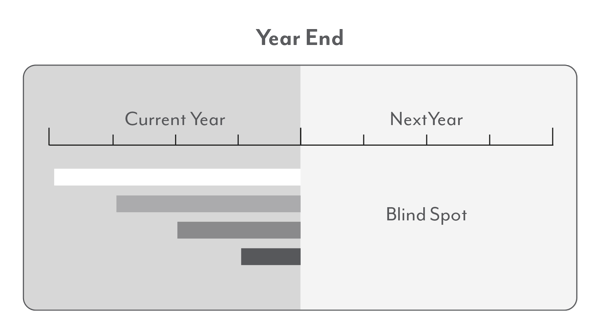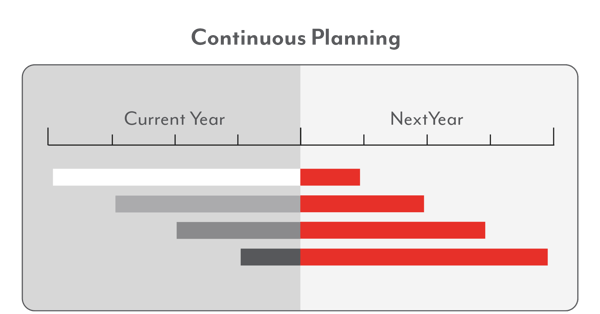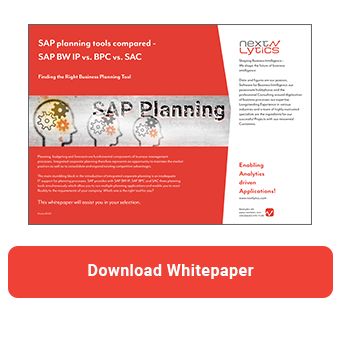In today's fast-changing world, leading companies have been able to adapt their planning to the uncertain environment. More and more organizations are moving from rigid year-end planning to more agile rolling planning.
However, many companies still use the traditional approach with rigid planning and forecasting procedures. Although this approach is not suitable for volatile, complex and uncertain environments. Many managers complain about the enormous amount of time and effort involved in traditional planning. Planning is done too granularly, which on the one hand creates an illusion of control. On the other hand, it leads to the plan being considered outdated after only a few months. Because decisions are made too early and on the basis of outdated assumptions. The whole approach is further complicated by political influence, as the planning process becomes closely linked to spending limits, targets and incentive schemes.
For these reasons, more and more companies are rethinking their approach and putting more and more emphasis on agility, efficiency and integration. This allows them to increase the value of their planning processes and be better prepared for the challenges of the current business environment. The rolling forecast represents an opportunity to ensure the company's adaptability, to consolidate and further expand the market position as well as existing competitive advantages.
Instead of being limited to the current calendar year, the planning horizon is extended beyond that. While the difference between ambitions and actual forecasts is unclear with the traditional approach, the rolling forecast over 12 to 18 months offers the best assessment of the future business situation. Rather than a static view that quickly becomes outdated, the rolling forecast is regularly updated to reflect the latest known and expected events.

While the current periods are planned granularly, the periods further in the future are estimated rather high-level. This not only increases planning reliability, but also reduces the time and personnel required. Thus, rolling planning helps you to get a better grip on managing your business in a dynamic and unpredictable world.
SAP Planning tools compared - SAP BW IP vs. BPC vs. SAC
Forecast layouts in SAP Analytics Cloud
However, this approach can only be successful if you have the necessary processes and forecasting capabilities in place. This requires the right knowledge, data and tools. Until now, the lack of the right tools has been the major stumbling block in implementing rolling forecasting.
SAP Analytics Cloud (SAC) eliminates this stumbling block. With the help of the so-called rolling forecast layout, you are able to display actual data for periods before a cut-over date and forecast data for subsequent periods.

The system automatically includes the new months in the next planning cycle. No manual adjustment is necessary. The date on which the table switches between the historical and forecast versions is called the cut-over date.
To determine this, you have several options. You can select today's date or determine a specific date. You can also use the last booked actuals. The system will then automatically recognize it and use the last date for which actual data is available as the cut-over date. Alternatively, you can set up an input control (a variable) and allow the user to set the cut-over date themselves.
Keep in mind that the planning time series in different planning modules, such as P&L and Balance Sheet, should be identical. Different time series cause difficulties in reporting and the dependencies between the planning topics become more complex.
It is important to emphasize that the Forecast Layout is a standard function of SAC that can be set up with a few clicks. A comparable function in Integrated Planning (SAP BW IP) or SAP Business Planning and Consolidation (SAP BPC) would require the definition of multiple structures and programming of customer exits. Thus, for the first time, the business department has the possibility to perform a real rolling planning per default.
SAC Forecast - our conclusion
While the business environment is changing faster and faster, rolling forecasting offers the possibility to keep up. By keeping the planning horizon constant, the blind spot is eliminated, increasing planning certainty. At the same time, this approach reduces the time and personnel efforts required.
SAP Analytics Cloud offers rolling forecasting as a standard feature. This allows you to implement this method quickly and cost-effectively. Since no manual adjustments are necessary in a new planning cycle, your planning is accelerated enormously.
Would you like to learn more about the planning possibilities of SAP Analytics Cloud? Are you trying to build up the necessary know-how in your department for SAP Analytics Cloud Planning? Or do you need support with a specific question? Request a non-binding consultation offer today!
SAP Analytics Cloud, SAP Planning

/Logo%202023%20final%20dunkelgrau.png?width=221&height=97&name=Logo%202023%20final%20dunkelgrau.png)
























